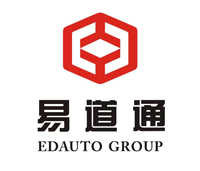As of May 2025, the EU automobile market presents a “two-faced” pattern: battery electric vehicles (BEV) account for only 15.4% of the
market share, while hybrid electric vehicles (HEV and PHEV) account for as much as 43.3%, firmly occupying a dominant position. This phenomenon not only reflects the changes in market demand, but also provides a new perspective for the development of the global new energy vehicle industry.
Division and challenges of the EU market
According to the latest data, the EU BEV market performance was significantly differentiated in the first five months of 2025. Germany, Belgium and the Netherlands led with growth rates of 43.2%, 26.7% and 6.7% respectively, but the French market declined by 7.1%. At the same time, hybrid models blossomed in markets such as France, Spain, Italy and Germany, achieving growth of 38.3%, 34.9%, 13.8% and 12.1% respectively.
Although pure electric vehicles (BEV) increased by 25% year-on-year in May, hybrid electric vehicles (HEV) increased by 16%, and plug-in hybrid electric vehicles (PHEV) grew strongly for the third consecutive month, with an increase of 46.9%, the overall market size still faces challenges. In the first five months of 2025, the number of new car registrations in the EU fell slightly by 0.6% year-on-year, showing that the shrinkage of traditional fuel vehicles has not been effectively filled.
What is more serious is that there is a huge gap between the current penetration rate of the BEV market and the EU’s 2035 new car zero-emission target. The lagging charging infrastructure and high battery costs have become the core bottlenecks. There are less than 1,000 public charging stations suitable for heavy trucks in Europe, and the popularization of megawatt-level fast charging is slow. In addition, the price of electric vehicles is still higher than that of fuel vehicles after subsidies. Range anxiety and economic pressure continue to suppress consumers’ purchasing enthusiasm.
The rise and technological innovation of China’s new energy vehicles
In the global new energy vehicle market, China’s performance is particularly eye-catching. According to the China Association of Automobile Manufacturers, China’s new energy vehicle sales are expected to reach 7 million in 2025, continuing to be the world’s largest electric vehicle market. Chinese automakers have made continuous breakthroughs in technological innovation, especially in battery technology and intelligent driving.
For example, CATL, as a world-leading battery manufacturer, has launched the “4680″ battery, which has higher energy density and lower production costs. The application of this technology not only improves the endurance of electric vehicles, but also provides the possibility of reducing the cost of the entire vehicle. In addition, NIO’s battery replacement model is also being promoted. Users can complete battery replacement in a few minutes, which greatly alleviates endurance anxiety.
In terms of intelligent driving, Huawei has cooperated with many car companies to launch intelligent driving solutions based on self-developed chips, which have L4 level autonomous driving capabilities. The implementation of this technology not only improves driving safety and convenience, but also lays the foundation for the future commercialization of unmanned driving.
Future market competition and technology competition
As the EU’s carbon emission regulations continue to tighten, automakers are facing increasing pressure to reduce emissions, and may be forced to accelerate their electrification transformation. In the future, technological innovation, cost control and policy games will reshape the competitive landscape of the European auto market. Who can break through the bottleneck and seize the opportunity may determine the ultimate direction of industry change.
In this context, China’s new energy vehicle technology advantages will become an important bargaining chip in its global market competition. With the continuous advancement of technology and the gradual maturity of the market, Chinese automakers are expected to occupy a larger share of the future electric vehicle market.
The disruptive reversal of the EU electric vehicle market is not only the result of changes in market demand, but also the joint effect of technological innovation and policy guidance. China’s leading position in technological innovation for new energy vehicles will bring new opportunities and challenges to the global market. In the future, with the acceleration of the electrification process, the new energy vehicle industry will usher in a broader development prospect.
Email:edautogroup@hotmail.com
Phone / WhatsApp:+8613299020000
Post time: Jul-01-2025



